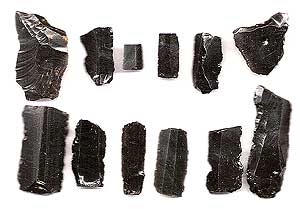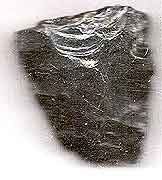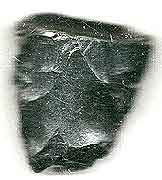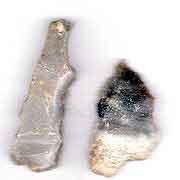| CAVES OF THE CUETZALAN REGION, Puebla, Mexico. | ||||||
| << Bibliography | Main Index | Links >> | ||||
ARCHAEOLOGY: CAVES AND OLLAS In pre-Hispanic times caves in Mexico had a religious or magical significance for the native cultures. The most obvious signs of this use of the caves are the large pot vessels known as Ollas. These can be over one metre high and were probably used for collecting water. These pot vessels were often placed in areas quite difficult to reach. Why would an Olla be placed 200mtrs into a cave, when 10mtrs. into the cave was a better water supply? Obviously special rites and ceremonies dictated their placement. The custom of placing Ollas in caves probably dates back to pre-historic times. On a previous expedition to the Chiapas area of Mexico we found several of the larger caves had Ollas, and a few still had native superstitions attached to them in particular a cave named Borohuix. In this cave a staircase of gours descended 60mtrs from the entrance to a large chamber with two passages radiating off. Half way down the slope a large Olla thickly encrusted in calcite collected drip water. The local women were totally against us going into the cave because we would upset the spirit world. We were told that of the two passages at the bottom, the one on the left led to Heaven while the one on the right led to Hell. With full permission from the headman of the village we descended the cave and explored the passages which through some light on the superstition. The passage leading to heaven was very well decorated and led after several hundred metres to a large dry chamber. The passage leading to hell descended steeply through a series of boulder ruckles to a bat roosting chamber with an incredible stink of ammonia. On being disturbed the bats formed an almost impenetrable barrier as thousands of them flew round the chamber and a vision of Hell could quite easily be imagined. On exiting the cave we found the entrance had been garlanded to appease the gods and possibly ensure our safe return. Olla in Alpazat Bivi CaveIn Cuetzalan we have heard of no such superstitions concerning the caves, although Ollas have been found in two caves. One of the Ollas stands a metre high and was found in a high level chamber of the Bivi-Cave close to Cueva D'Alpazat. A smaller version was found on top of a boulder ruckle 100mtrs inside the Killer Bee entrance to the San Andreas System. Potsherds have also been found at other cave sites in the area, notably Sima Grande and San Miguel. The potsherds from both these caves were plain and have been left in situ. No associated artefacts were discovered although we were told a local teacher removed artefacts from Sima Grande. The use of Obsidian in the area by ancient cultures is evident; this was used for the manufacture of tools such as knives, daggers and arrowheads. At present no obsidian has been found in any of the caves although several broken blades and flakes have been found around the Resistol entrance to the Cuetzalan System.
Other signs of cave use include several small circular walled structures; these generally measure two metres across and are from one to two metres high with an entrance portal. Caves with these features include Tsalopan, Talcomitl and Quichat. The structures in Tsalopan and Talcomitl are situated only a short way underground. Quichat is quite different with four structures spread out along a passage several hundred metres long. The final structure is close to the edge of a large high chamber with a surface shaft. A man made path can be followed between the structures. Several areas of the cave show signs of dry stone walling especially in the final section of the cave over six hundred metres from the entrance. Signs of excavation of the cave earth are evident in several places and probable tally marks have been found on the passage walls in three locations. This cave would appear to have been used for mineral extraction probably Saltpeter and could possibly have been worked during the Mexican civil war. An interesting discovery was made in the surface shaft Sima Hacienda when the initial explorer landed on the remains of a light aircraft and not the rocky floor he expected, again this could be another sign of local involvement in the Mexican civil war. |
||||||
| << Bibliography | Main Index | Links >> | ||||




